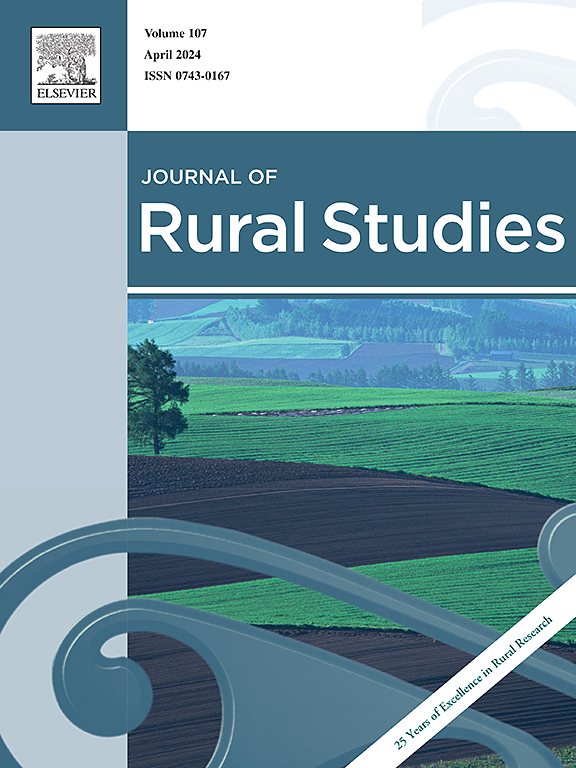The impact of urban shrinkage on agricultural production efficiency—A case study of the lower Yellow River region in China
IF 5.1
1区 社会学
Q1 GEOGRAPHY
引用次数: 0
Abstract
Urban shrinkage is a global development phenomenon. Its multi-dimensional effects have become a new topic in academia. While existing literature presents both positive and negative impacts, consensus remains elusive. Agricultural production efficiency (APE), as an indicator of urban-rural dynamics and regional system restructuring, offers valuable insights into urban shrinkage external effects. This study examines 82 counties in the lower Yellow River region of China, using panel data from 2010 to 2021 to investigate how urban shrinkage impacts APE and its underlying mechanisms. The Super-SBM model is applied to evaluate APE, alongside fixed-effect and mediation-effect models for empirical analysis. (1) During the research period, the proportion of shrinking counties reached 65.85 %, and APE showed a phased characteristic of “slow growth—rapid increase—sustained rise,” and the efficiency improvement in shrinking cities was significantly higher; (2) Urban shrinkage has a significant positive impact on APE, which remains consistent after a series of robustness tests; (3) Urban shrinkage positively impacts APE through scalization, intensification, and mechanization, scaling has the most substantial effect, followed by intensification, while mechanization plays a lesser role. The results suggest that although urban shrinkage leads to population loss, it also creates opportunities for agricultural transformation and upgrading through labor substitution. This offers a novel sight on urban shrinkage effects and offering implications for advancing agricultural modernization and regional coordinated development.
城市收缩对农业生产效率的影响——以黄河下游地区为例
城市萎缩是一种全球性的发展现象。其多维效应已成为学术界的新课题。虽然现有文献提出了积极和消极的影响,但仍难以达成共识。农业生产效率(APE)作为城乡动态和区域体系结构调整的指标,对城市收缩的外部效应具有重要意义。本研究以中国黄河下游地区的82个县为研究对象,利用2010年至2021年的面板数据,探讨城市收缩对APE的影响及其潜在机制。本文采用Super-SBM模型对APE进行评价,并结合固定效应模型和中介效应模型进行实证分析。(1)研究期内,萎缩县占比达到65.85%,APE呈现“缓慢增长-快速增长-持续上升”的阶段性特征,萎缩城市效率提升明显更高;(2)城市收缩对APE有显著的正向影响,经过一系列稳健性检验,这一影响是一致的;③城市收缩通过规模化、集约化和机械化正向影响APE,规模效应最显著,集约化次之,机械化作用较小。研究结果表明,城市收缩虽然导致人口流失,但也通过劳动力替代为农业转型升级创造了机会。这为研究城市收缩效应提供了新的视角,对推进农业现代化和区域协调发展具有重要意义。
本文章由计算机程序翻译,如有差异,请以英文原文为准。
求助全文
约1分钟内获得全文
求助全文
来源期刊

Journal of Rural Studies
Multiple-
CiteScore
9.80
自引率
9.80%
发文量
286
期刊介绍:
The Journal of Rural Studies publishes research articles relating to such rural issues as society, demography, housing, employment, transport, services, land-use, recreation, agriculture and conservation. The focus is on those areas encompassing extensive land-use, with small-scale and diffuse settlement patterns and communities linked into the surrounding landscape and milieux. Particular emphasis will be given to aspects of planning policy and management. The journal is international and interdisciplinary in scope and content.
 求助内容:
求助内容: 应助结果提醒方式:
应助结果提醒方式:


